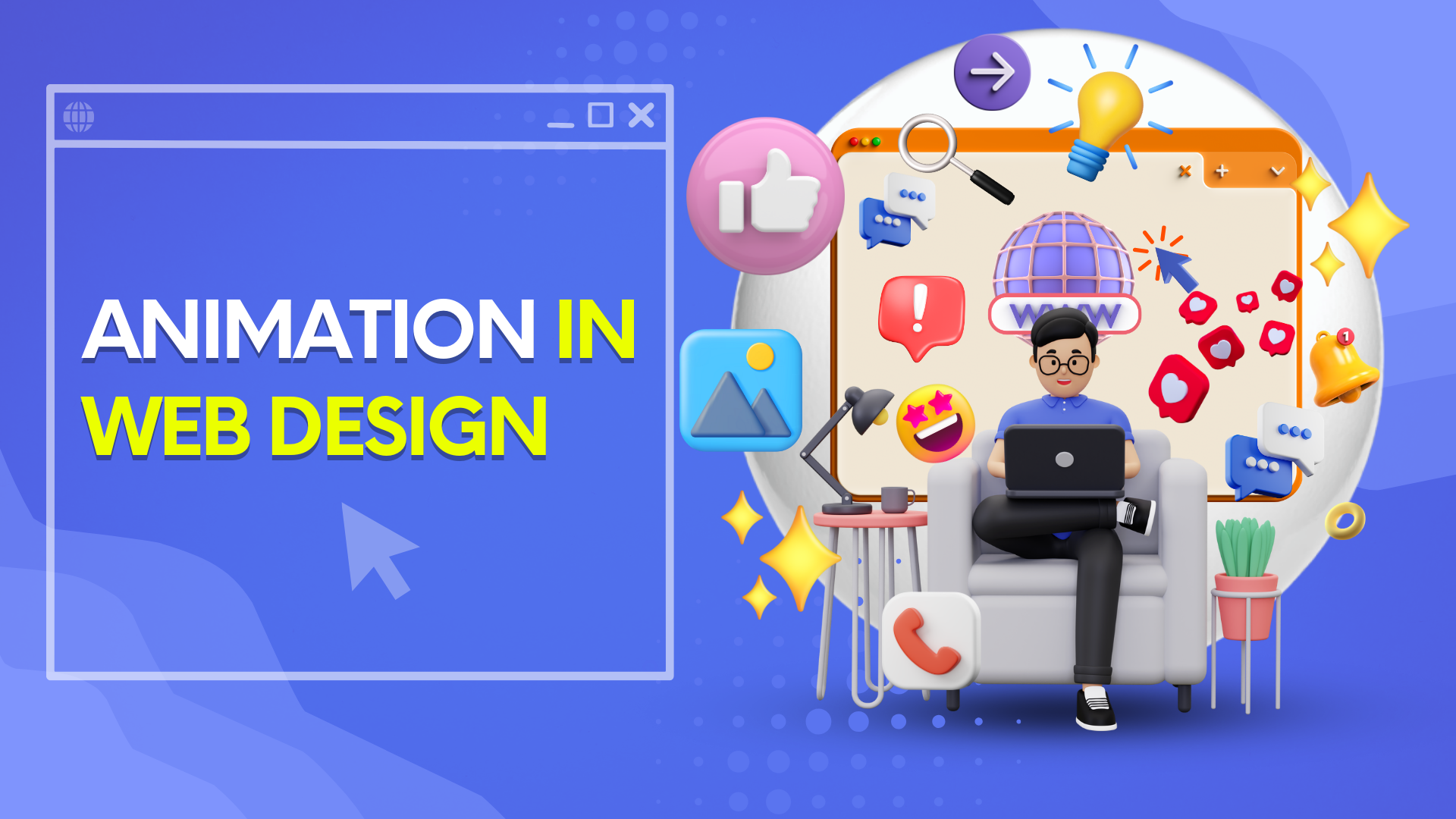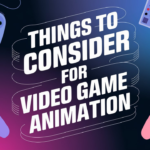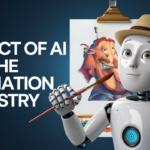With the rise of advanced technology and creative techniques, animation has changed the digital landscape, making websites more dynamic and user-friendly. Web Design is the light of creativity and interactivity in the world of the internet.
If we talk about the specialty of web design it’s the ability to add motion and dynamism in web elements. This can be done by using various technologies like JavaScript, CSS, and SVG – scalable vector graphics.
It helps transform the basic static website pages into more engaging, lively and memorable experiences. So we can say that web design is just not a design choice but also a very important strategic tool for modern web design.
In this blog post, we’ll explore the art and science behind animation in web design, highlighting its importance and different ways to improve user experience.
Importance of Animation for Web Design in Modern Web Design
A website is said to be a successful one when it captures its visitors’ attention the moment they land on the website page. Here comes the role of web animation in designing. Web animation helps the website to breathe vitality into the static website.
Why do we need Web Animation?
If we look at the early days of websites the web pages used to be basic static pages that presented information in a very fixed format. But the user experience and expectations evolved as the technology advanced and it created a need for more creative and interactive web design. This creativity shift gave rise to web animation and today it’s not only a trend but a need and fundamental aspect of UX design.
Ways Web Animations Actually Improve Your User Experience Design
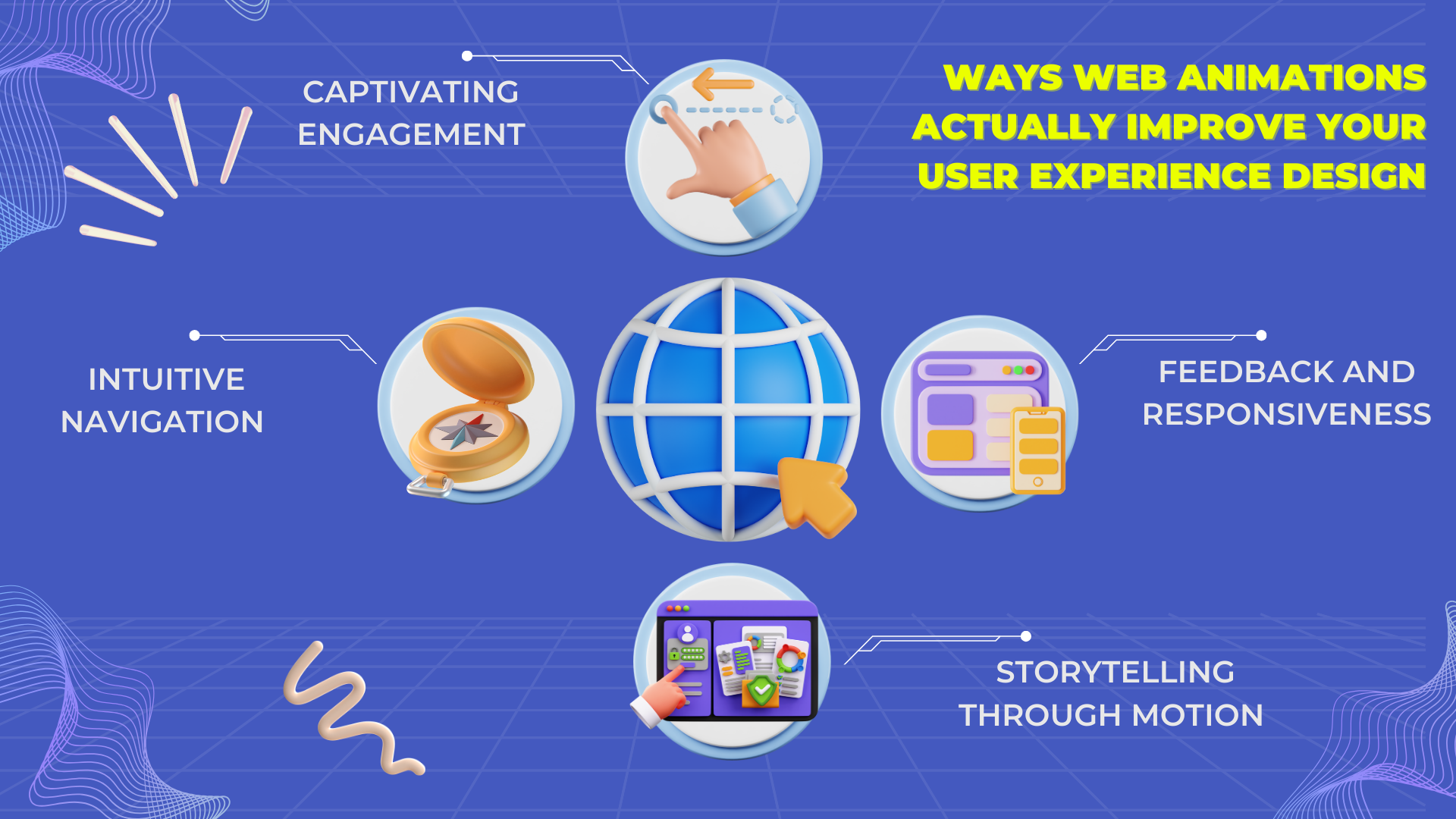
Web animations impact the user experience and it’s just not about appearance. Having web animations helps guide users more effectively which provides feedback creating delightful and trustful interactions.
- Captivating Engagement: These engaging motions encourage users to explore further, reducing bounce rates and increasing overall user interaction time with animated elements, such as hover effects and interactive buttons.
- Intuitive Navigation: In addition to providing visual cues, animations enhance navigation and make it easier for users to find what they’re looking for. Smooth transitions between pages, scrolling animations, and interactive menus all enhance the user experience.
- Feedback and Responsiveness: Whether it’s clicking a button or submitting a form, web animations provide real-time feedback, reducing uncertainty and enhancing user confidence.
- Storytelling through Motion: Animation simplifies complex concepts, making information more digestible and engaging Through animated sequences, websites create stories that engage users by turning mundane data into compelling narratives.
What are the Various Types of Animations in Web Design?
There are various types of animation in web designs.
Start off with CSS animations that use cascading style sheets that create a seamless transition. This enables the designers to craft elegant fade-ins, rotating elements, and slide-outs.
Next, we have the Javascript Animations, which offer advanced control, and also allow complex animations such as parallax scrolling, immersive pages, and interactive charts.
With SVG Animations, designers can produce animated website design details with precision, enhancing visual engagement with visually stimulating graphics and icons.
User interfaces with micro-interactions, such as clicks and hovers, provide a gratifying experience.
A particle animation adds a touch of magic to a website by making elements like stars and bubbles move independently.
The use of web design 3D animation does not only provide depth and realism but also creates an immersive environment that enhances user participation.
Now we will talk about web design scroll animation. Users’ scrolling actions trigger scroll animations, allowing the sequential unveiling of content.
So each type of web animation provides a unique purpose that transforms static web pages into more lively pages that are interactive and visually captivating. Designers can create a vibrant user experience by using the right animation technique. This will enrich the digital interaction eventually leading to a lasting impression.
Benefits of Using Animation: Beyond Aesthetics
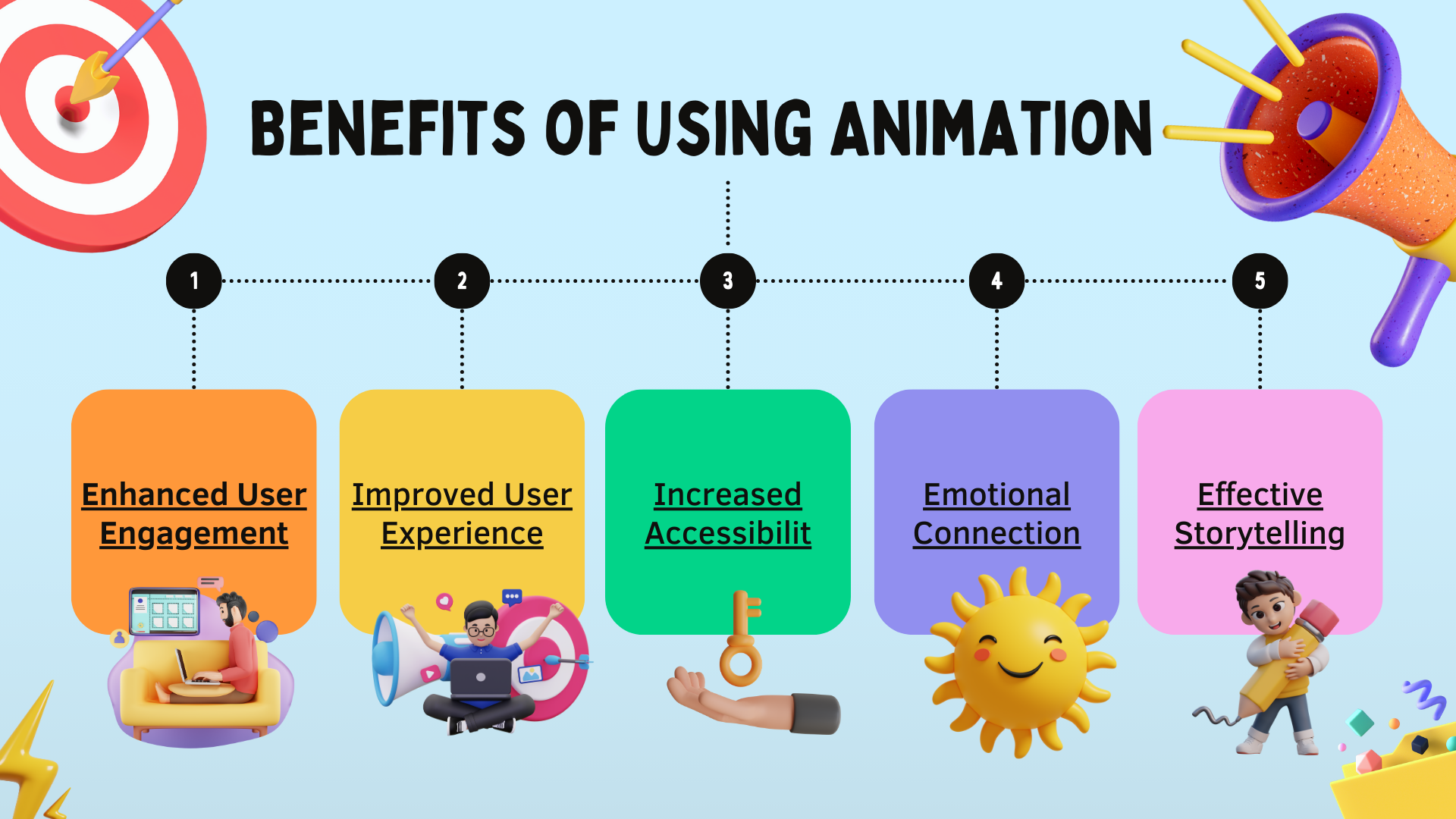
Web design animation effects have many benefits beyond aesthetics. In addition to improving understanding, animation increases engagement and boosts conversions. The impact is not just visual; it is also strategic. It creates memorable brand experiences, drives emotional connections, and sets websites apart in an increasingly competitive digital landscape.
- Enhanced User Engagement: Web design is all about user experience (UX), and animation plays an important role in enhancing it. A well-designed animation can provide visual cues and feedback for users. Interactive animations, such as clickable buttons or scroll-triggered effects, encourage user exploration and keep them engaged.
- Improved User Experience: Animations create a smooth and intuitive navigation experience. From smooth transitions between pages to interactive form validation, web animations provide instant feedback, reduce user confusion, and improve overall usability.
- Increased Accessibility: By simplifying complex information through movement, animation improves accessibility for users of various abilities. Proper implementation will ensure inclusivity, making the website accessible to a wider audience.
- Emotional Connection: Well-timed animation can evoke joy, surprise, or curiosity, creating a deeper connection between the user and the website, thereby strengthening brand loyalty. These animations create a human touch, making the browsing experience more relevant and enjoyable. Memorable animations leave a lasting impression and keep users coming back to the site.
- Effective Storytelling: By using animation sequences on your website to guide users through stories, your website can effectively communicate its message, improving engagement and content retention.
Challenges and Considerations in Implementing Animations: Striking the Balance
Animation offers great potential, but implementing it poses many challenges. User experience can be negatively affected by overly complex animations. It’s essential to find the right balance between creativity and performance. Animation implementation must also ensure accessibility for all users, including people with disabilities.
What are the Best Practices for Implementing Animations?
It’s important to adhere to best practices when implementing animations. Animations must be optimized for performance, consider the user’s context, and provide flexible fallbacks for browsers that do not support them.
Future of Animation in Web Design: Innovations and Possibilities
The future of animation in web design looks incredibly bright as technology advances. Virtual reality (VR) and augmented reality (AR) are merging with web experiences, opening new avenues for immersive animation. Using machine learning and artificial intelligence, animations are adjusted to individual preferences, improving personalization. The future is dynamic, interactive, and limitless.
Animation is the art of making web pages come alive. The goal is to create movement, direct user attention, and improve the overall user experience. There are many techniques involved in animation on the web, from CSS animation to JavaScript interactivity. It’s the magic that turns static pixels into dynamic, engaging, and memorable digital experiences.
The Final Takeaway,
Web design and animation represent a fundamental change in the way we design and interact with the web. We can create digital experiences that resonate with users, tell compelling stories, and shape the future of the Internet by understanding its evolution, embracing its diverse forms, and implementing it thoughtfully. There are no limits to the possibilities when using dynamic canvas, powerful tools, and tools. Welcome to the exciting future of web design.

